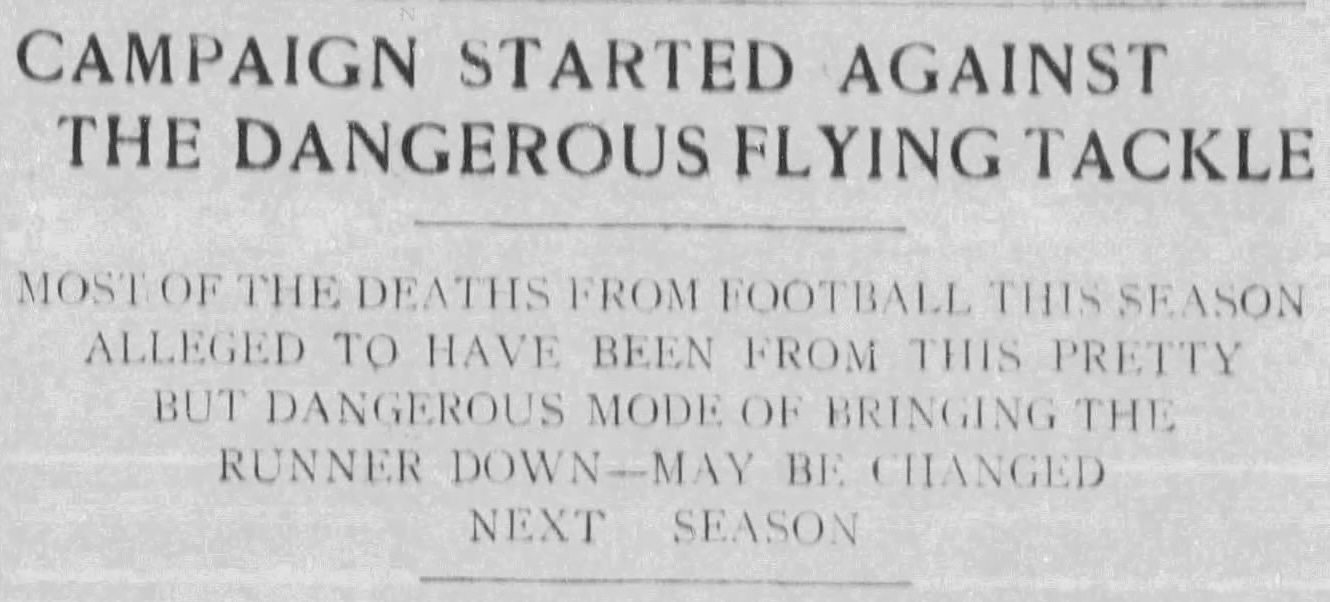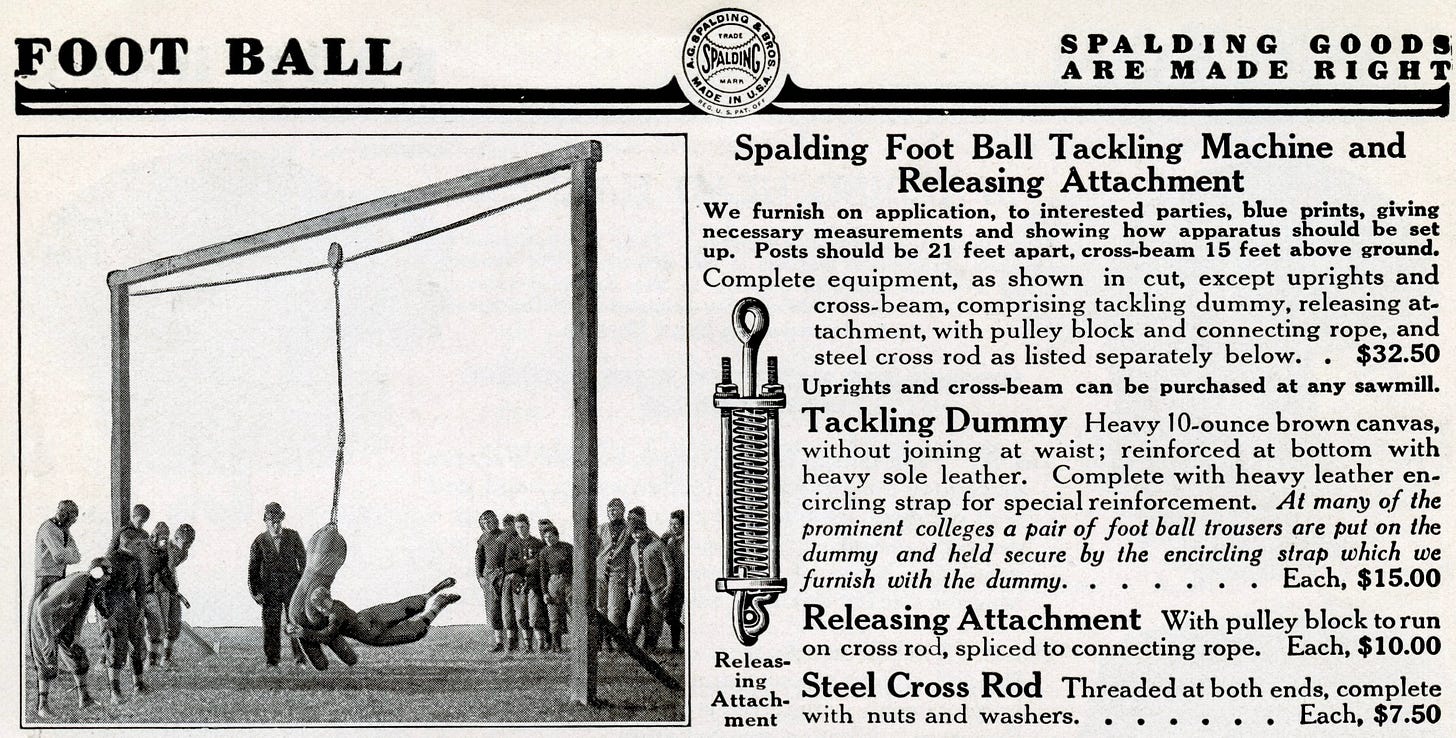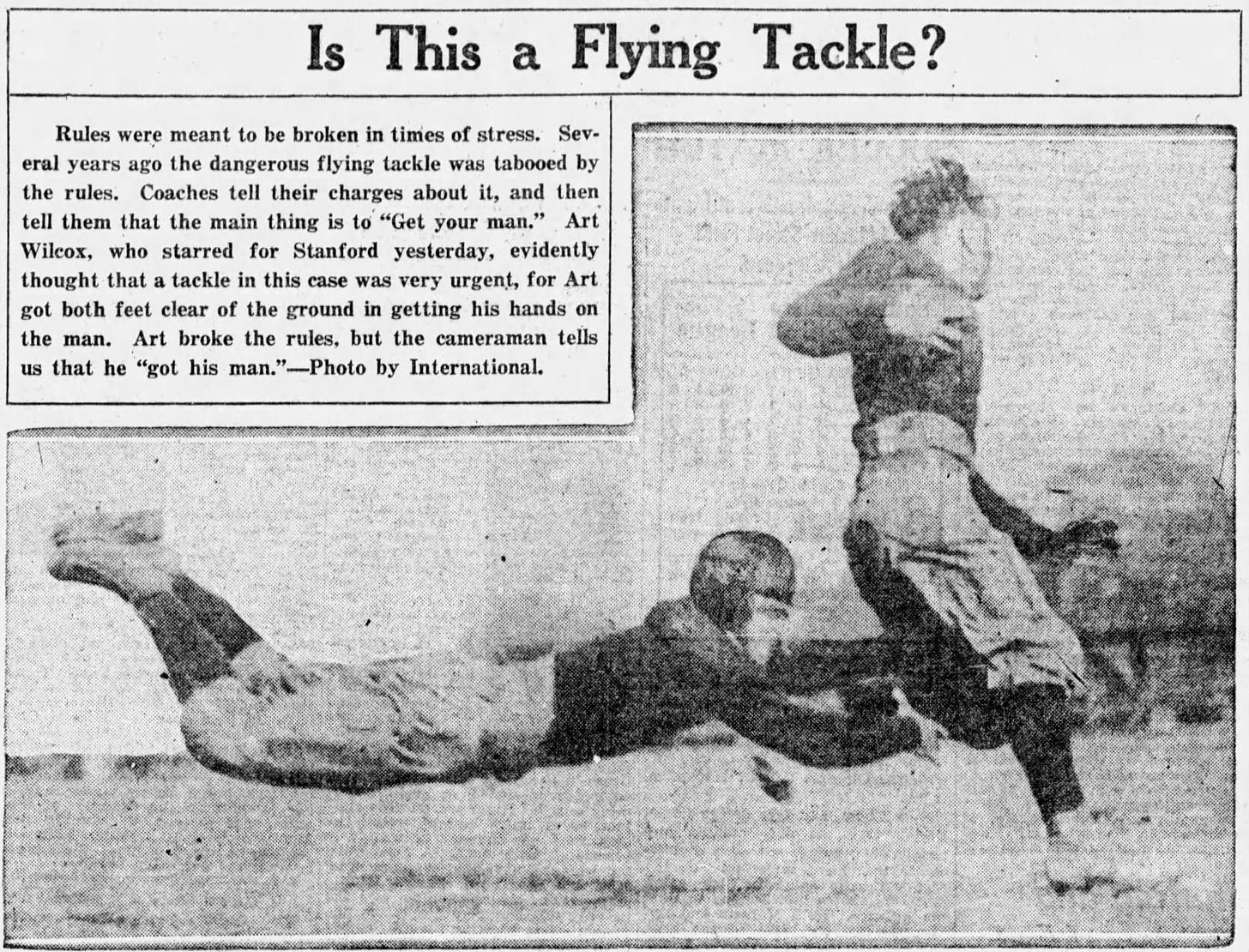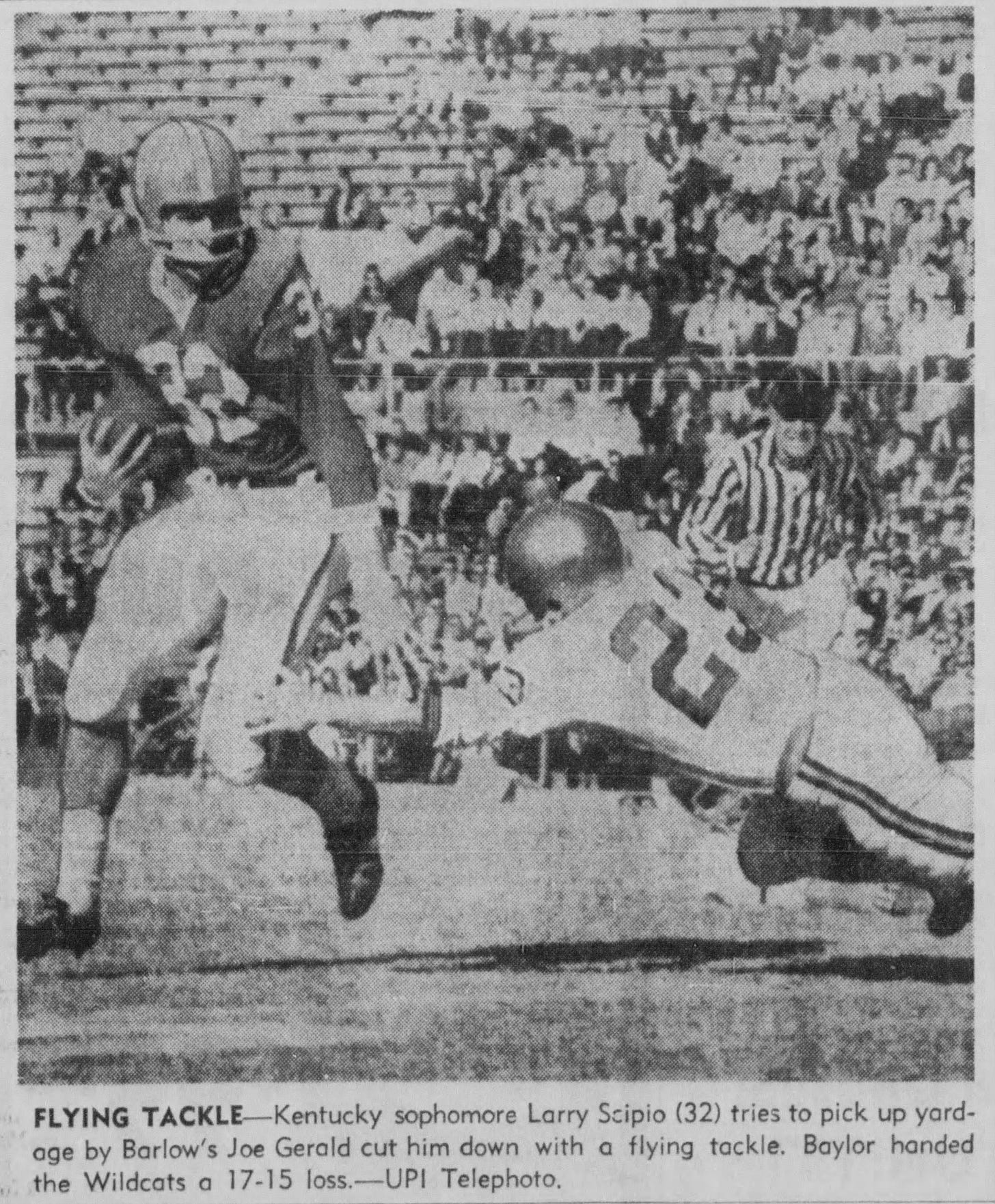Today's Tidbit... Remembering and Ignoring the Flying Tackle
The final chapter of my book, How Football Became Football, identified the eleven most important rules and other changes in the history of football. Whether or not I identified the top 11 correctly, among the changes I had on the bubble were the revisions to rugby's tackling rules. Like rugby, football initially allowed tackling only above the waist before allowing tackles above the knees in 1888. The change in regulations led to more effective tackling in general and by defensive ends in particular, so the game saw fewer open-field runs, pushing it toward power-oriented, mass and momentum play.
Even after that change, tackling below the knee remained illegal, but the rule was largely ignored, so it remained common practice. It's never a good thing to have rules that are ignored. Either enforce them or take them off the books, as should occur today with pants that do not cover the knees.
Another aspect of the tackling rules that suffered from the lack of enforcement was the flying tackle, which the regulations defined as occurring when both feet left the ground when making a tackle. The flying tackle became illegal in 1910 during the period's push to make football safer. Numerous experts pointed to stories suggesting that half the deaths occurring on football fields resulted from flying tackles. Newspapers reinforced the idea, but many football experts believed flying tackles seldom caused injuries.
Like tackling below the wait, officials struggled to call the flying tackle consistently. There were fewer officials on the field then, and while flying tackles by defenders trailing the runner were obvious, those made when the defender met a runner coming upfield were not always so. Adding to the situation, many coaches taught their teams to leave their feet when tackling. A standard practice drill at the time involved a tackling dummy hanging over a pit, in which tacklers dove at the bag rather than run through it, as taught today. So, coaches seldom pushed for officials to enforce the flying tackle rule.
The lack of enforcement led to the legalization of the flying tackle in 1925, but two deaths attributed to it during the 1931 season led to its banning once again in 1932.
As might be expected, the penalties for flying tackles were seldom called after 1932. While the ban remained on the books, everyone forgot about it until 1957, when the rule makers again eliminated the obsolete rule.
Flying tackles, in one form or another, are seen all over football fields today and provide a significant advantage to defenses compared to the old days when tackling was legal only above the waist.
Football Archaeology is a reader-supported site. Click here for options on how to support this site beyond a free subscription.






